Business-to-Business (B2B) E-Commerce in 2015
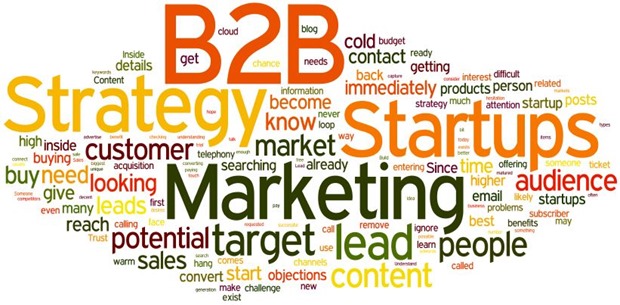
Business-to-business is a complex of commerce transactions which occur between companies. The most common examples of B2B relations are transactions between manufacturers and wholesalers, wholesalers and retailers. The overall volume of business-to-business transactions surpasses the volume of B2C transactions, because a typical supply chain consists of many B2B transactions and only one B2C transaction. For instance, a smartphone manufacturer buys processors, modems, camera modules, and other necessary components to produce the mobile device. The number of transactions can range from few to dozens. But there is alway one final transaction – a finished smartphone is sold to the consumer.
Another area of B2B relations is communication and collaboration. Many B2C companies relies on social media to interact with their consumers, but social tools are also effective in business-to-business relations. In this situation B2B social media marketing takes place.
What is B2B marketing? What are the nuances of B2B e-commerce? What are B2B e-commerce trends? We will try to answer these and others questions in this post.

All the benefits of B2B e-commerce platforms are possible because of real time data exchange and reduced cycle time. It results in higher productivity, improved quality, lowered costs, and faster delivery. Any B2B company can set up e-commerce website. Small companies can also participate in B2B marketplaces. B2B market is opened to buyers, sellers, and marketplaces.
Table of contents
The Drivers of B2B e-commerce
- Optimized procurement. Using B2B e-commerce websites, the company can be electronically connected to its suppliers. This leads to lower inventories (it is not necessary to store extra stocks), better prices (as well as lower costs), and real time accounts reconciliation. The system is constantly monitoring the inventory level of raw materials. At the right time, it automatically triggers an order to the supplier with the lowest price.
- Partner Management. If the company works with agents, distributors, affiliates or uses other channels to provide sales, online B2B transactions can help significantly in streamlining the process.
- Order Fulfillment. In addition, B2B system enables and monitors order fulfillment.
Challenges with B2B e-commerce solutions
As B2B companies get into the e-commerce space, they can encounter some challenges:
- Channel conflicts
- Inability to understand customers
- Lack of backend support
- Imprecise consumer demand planning
- Lack of good customer experience
B2B e-commerce is on the rise, but many B2B companies still don’t know how to use it right. Being in the early stages of B2B e-commerce system building, they face a lot of challenges. At the same time, there are B2B e-commerce companies with a huge experience in online selling. Both are trying to ramp up their presence on the digital part of B2B market, but because of the gap in the experience they rely on different B2B marketing strategies. Companies of the first type are working on B2B e-commerce infrastructure; more experienced businesses try to use and enhance the existing one.
4 stages of building B2B e-commerce website, system and infrastructure
- First of all, the company should establish and study the business case. This stage involves such goals as creation of key assumptions and product strategies, estimation of costs, operational profitability, and breakeven.
- During the next stage, it is necessary to set key priorities for phased growth. The company has all necessary data, so it is time to determine how to use the resources, and what to do first.
- The third stage is about the team and technology. The team should include reliable specialists, which often come from B2C companies, and the technology, which is a B2B e-commerce website, must be based on the latest trends.
- The fourth stage includes a lot of testing. It is necessary to understand, that the organization and the customer experience are top notch. If they are so, it is time to launch the website.

Digital Expenditures in B2B E-Commerce
Three directions of B2B e-commerce growth
When the company has a B2B e-commerce website, system, and infrastructure, it should focus on growth. There are three important directions of development. The first one is about optimization of sales and orders. There is always a need to teach customers to work with B2B e-commerce platform. The goal is to move them to the web, and to steer orders to the e-commerce website. This process reduces the time spent on routine processes and leaves more time for personalized service.
The second development direction is more analytical. The B2B e-commerce website should provide the up-to-date, high quality, and detailed product information. A real-time updates of availability, prices, and shipping are important for both customers and sales teams.
Improving the customer experience is also important, and it is the third direction of development. Of course, this process is endless, because every year e-commerce market generates new rules, trends and tendencies. The company should simplify the customer’s everyday routines. The offered services must be device-agnostic and technology-independent.
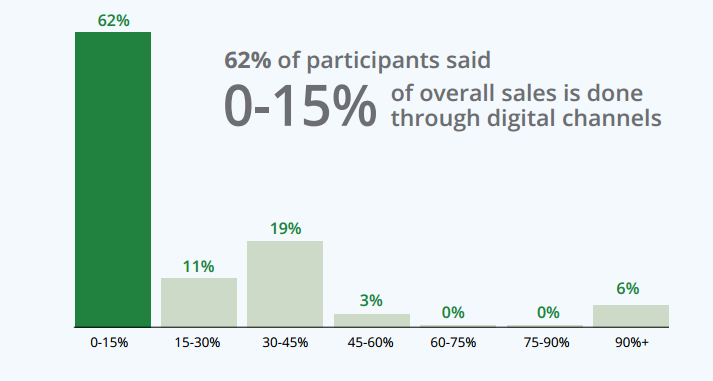
The Percent of Overall Sales Done Through Digital Channels
B2B vs B2C e-commerce
B2B and B2C e-commerce businesses has a lot of common features, but there is one fundamental difference – a target audience. B2B companies work with other businesses, while B2C companies are aimed at end user. The audience of B2B company can include only one consumer, while such situation is impossible in a case of B2C. B2B customers always by with their head, not their heart. Their decisions are cold and logical. In B2C world the situation is often opposite.
Its very important to understand, how this affects e-commerce websites. With so much competition, B2C e-commerce websites must stand out from the crowd to get noticed and become successful. But it doesn’t mean, that B2B e-commerce websites should have less noticeable design.
B2C e-commerce websites has much more visitors, but lower conversion rate, so one of their main goals is to increase the conversion rate. Of course, they should also attract new customers. The same is about B2B e-commerce websites – conversion rate and new visitors – but these goals are not of the highest priority. Instead they should be focused on different business problems: provide real time information and all necessary connections.
B2B e-commerce websites use customer log-ins while B2C sites often relies on less intrusive guest checkouts. B2B customers prefer long-term collaboration, as a result they may have schedules, specific deals, and set-ups, which are impossible on website with guest checkout. At the same time B2C customers are looking for new unobtrusive purchases without registration or log-ins
Product information on both types of sites is also different. B2B e-commerce websites provide a lot of explainer videos, spec sheets, how-tos, webinars, and tutorials. All these materials are also possible on B2C sites but less often and in a less quantity.
The checkout process on B2Cs must be as short as possible. For B2Bs, more careful approach is required. B2B purchases are more unique and complex, so the possibility of human connection is a plus.
At first glance, B2B and B2C e-commerce are very similar, but with some core differences. It is obvious, that during next few years most of these differences disappear. B2C will assimilate the approach to ongoing customer relationships of B2B. In its turn B2B will take some pointers about working with social channels. But there always will be customers, who make B2B and B2C different. The opposition of functional vs irrational and practical vs emotional will never make them the same.

The Use of Social Media in B2B
Five smart business moves for B2B e-commerce companies in 2015
The brick-and-mortar experience is changing rapidly not only for the B2C space, but also for B2B companies. Websites have already become the sales tool for B2B e-commerce companies, and have all chances to replace ordinary stores in future. According to Frost and Sullivan, B2B e-commerce will hit $12 trillion milestone by 2020. For example, the milestone of 2012 was $5.5 trillion. To get ahead of the curve, companies should rely on B2B marketing strategies. Here are 5 of them:
- Invest in better technologies
- Provide better mobile experience
- Use B2C experience in e-commerce
- Rely on omnichannel strategy
- Make an emphasis on a segment marketing
Invest in better technologies. There are a lot of useful software designed for B2B e-commerce companies. Order management systems (OMS), enterprise resource planning systems (ERP), useful software and hardware result in a higher level of business automations. New technologies also have a positive impact on customer experience and competitive advantages of the company.

Order Management System
Provide better mobile experience. Mobile devices are going to dominate on both B2C and B2B markets. Entrepreneur writes about 30 to 50% of all online traffic coming from mobile devices in the U.S. Of course, smartphones and tablets are used more often in B2C relations than in B2B, but the new trend is obvious.
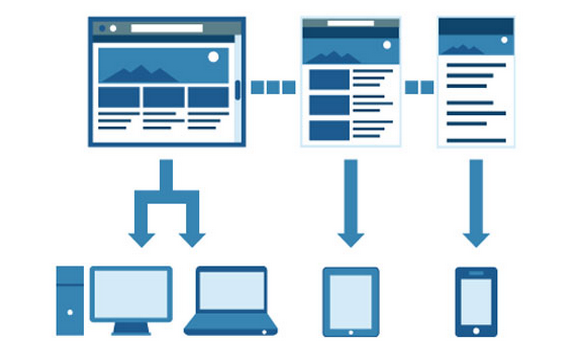
Responsive Web Design
Use B2C experience in e-commerce. In the world of e-commerce, B2C companies are always ahead of B2B companies, and play a role of testing environment for new technologies. Taking this into account, we can speak about a number of advantages, which B2B e-commerce companies should use.
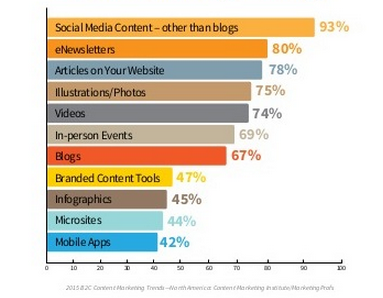
B2C content marketing tactics
Rely on omni channel strategy. B2B also lags behind B2C in realisation of an omni channel strategy. That’s why, B2B companies can rely on the experience of their counterparts.

Omni Channel Strategy
Make an emphasis on a segment marketing. Of course, there are B2B companies with single group of customers each, but for the most cases one size doesn’t fit all, and different groups of buyers require different approaches. In this situation, companies should implement segment marketing strategies.

Segment Marketing
Ideas for small B2B startups
B2B market is opened not only for big companies, but also for small startups. Of course, the activity and turnover are different, but almost everyone can start e-commerce B2B project.
Bookkeeping
Generally, small businesses operates without an on-staff accountant. As a result, the task of record keeping falls to the business owner, or on the third party. If you know what to do with receipts and tax returns, you can run such B2B startup. Working with small businesses only, you can put in a few days a month for each client.
Warehouse/shipper
If you have some extra space at home or own any empty room, you can run this business. There are a lot of small e-commerce business owners who need a warehouse and a shipper. The downside of such b2b startup is in packing and shipping. The work with orders can turn into a headache.
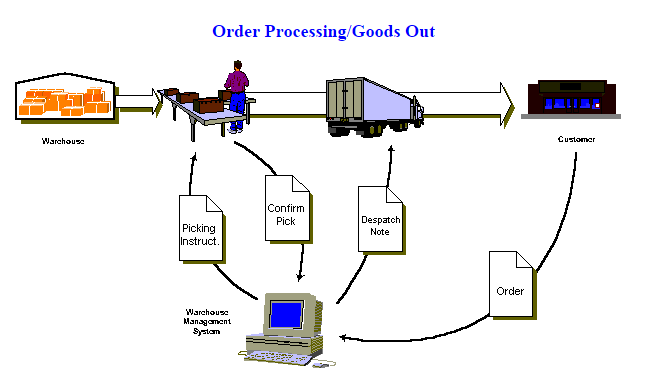
Order Processing
Eco-consulting service
Know everything about environmentally friendly solutions for homes and offices? That’s enough to run a small B2B eco-consulting service. Use your knowledge to help other business owners make their working space more environmentally friendly.
Writing a business plan
Writing a business plan is a complex task, so not everyone can cope with it. If you have all necessary skills, you can turn them into money.

Business Plan
Web content
Everyone knows, that content is a king of the web. But business owners don’t have time to create it every day. Being a good writer, you need only a few relationships with local businesses to run your B2B startup.
Highly specialised web design company
Its extremely easy to finding a web designer that understands all the aspects of certain business. If you have enough experience in web design, you can become a highly tailored specialist, who focuses on one niche.

Web Design
App developer
There are a lot of small companies willing to have their mobile applications. Of course, they have small budgets, but you would surely find a niche market.
Workplace safety consultant
Small companies cannot afford to staff a full-time safety specialist, so you can create a small B2B startup to provide expertises without being on the payroll on a full-time basis. Are you a good expert in workplace safety?
Cost cutter
Cost cutter is a person who makes a reconciliation – takes the bills, looks for inaccuracies, and argues with the provider. To be a cost cutter, you need a good sales pitch and an eye for detail.









